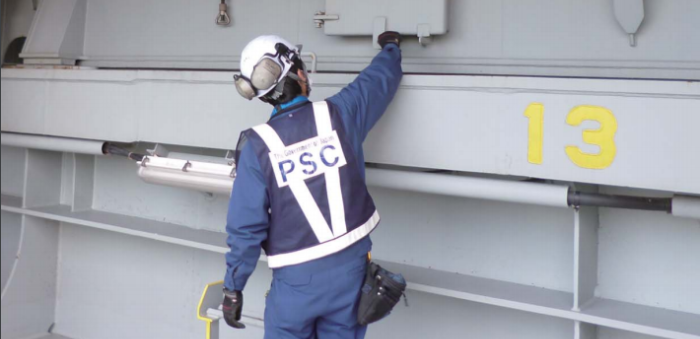One of the nightmares of a shipping organization is the Port State Control inspections that managed vessels are subject all over the world. This is not a new era for the industry as PSC was one of the foundation bases of modern shipping. During late 70s, firstly in Europe – after the serious accident of Amoco Cadiz sinking 3 miles of a French Coast, 1978 – and then spreading all over, the world nations were organized in MoUs or developed a national authority (eg USCG) in order to be protected by substandard shipping.
The results after almost 35 years are impressive in respect of safety performance and legislation implementation. Ship managers and Owners all over the world are very cautious when their managed vessels approach strict PSC areas and this has an impact on overall performance. PSC works as the tool of verifying the implementation of rules, regulation and legislation both at a national and international level.
How PSC affects organizations’ image
A PSC inspection is always a challenge for ship operators. The results of a PSC Inspection have an imminent impact on vessel’s and organization’s reputation and image. Namely, the profile that an organization builds has two sections: the public profile which is known to public through media and the industry profile which is known to industry’s stakeholders.
Public profile is based on the media reputation of an organization and may be affected from accidents or incidents (bad reputation) and Company’s Social Responsibility performance (good reputation). Additionally the industry profile is based on organization’s performance which is affected from accidents or incidents and the PSC results of managed vessels. Major industries interested parties base their decision making process on PSC results such as Oil Majors, Charterers, Rightship etc.
Results during PSC inspections create a continuous circle for operations. Unsatisfactory PSC performance leads to vessels’ and organizations’ targeting, which creates conditions (detailed inspections) for additional issues, while keeps vessels, crew and organizations under pressure which may result on financial losses or disturbance of operations and so on and so forth.
On the other hand, satisfactory PSC performance enhance vessels’ and organizations’ reputation and provide the field for flawless operations, increase the profits, giving the opportunity for modern vessels and better crews.
There are some tips for vessels in order to successfully get through a Port State control inspection.
Prior Inspection
- Good and effective preparation is the base for everything in shipping. A PSC Inspection preparation guide (or check list) should be followed on board in order items and issues to be checked prior inspection and possible gaps to be addressed effectively.
- As vessel’s condition is one of clear grounds that may lead to a more detailed inspection, they should be maintained in a high level of condition. Extra care should be made in embarkation area as this is the first impression for a PSCO.
- During organization’s personnel visits on board an inspection “simulation” to be conducted, trying to approach a PSCO’s point of view during inspection.
- Documentation and record keeping to be in good order and ready for review and inspection.
- Try to identify (and record/address) items and prepare answers for PSCO. This will show that vessel has an effective identification and reporting procedure.
- Minimize all activities on board (except commercial activities eg discharging/loading) in order to avoid additional eras for inspection
- Instruct crew to be dressed up in fully uniform and verify the use of PPE on board (this should be always a standard)
During Inspection
- Give a warm welcome to the inspector. Be polite and gentle
- Present all identified issues (accompanied by appropriate corrective measures) in order to be one step ahead of the PSCO
- Follow the inspection 100%. Normally a two parts team will be deployed on board for inspection (a deck party team and an engine party team). Chief Officer should escort and be with the deck party during inspection and Chief Engineer should escort the engine team respectively.
- Do not argue with the PSCO.
- If something is not working accept it. Regardless your statements and actions, PSCO will remain on facts.
- Do not volunteer additional information beyond that necessary to answer a PSCO’s question.
- Keep files closed and hand the PSCO a file only when asked
- Try to fix as many of the items the PSCO (and show same to him/her) in order to leave the minimum possible items in PSCO’s list
After Inspection
- An inspection ends when vessel has a copy of PSC final report and the inspector has been disembarked.
- Head office to be notified immediately for results
- All issues should be addressed immediately for rectification
- A safety meeting may be conducted in order to de brief crew for the inspection and set an action plan for rectification if needed.
- All items in PSCO’s list should be handled as per SMS procedures: Report; Address (corrective – preventive measures); Follow up and; Close out – a final copy to be provided on board
































































It is a great help for my research study